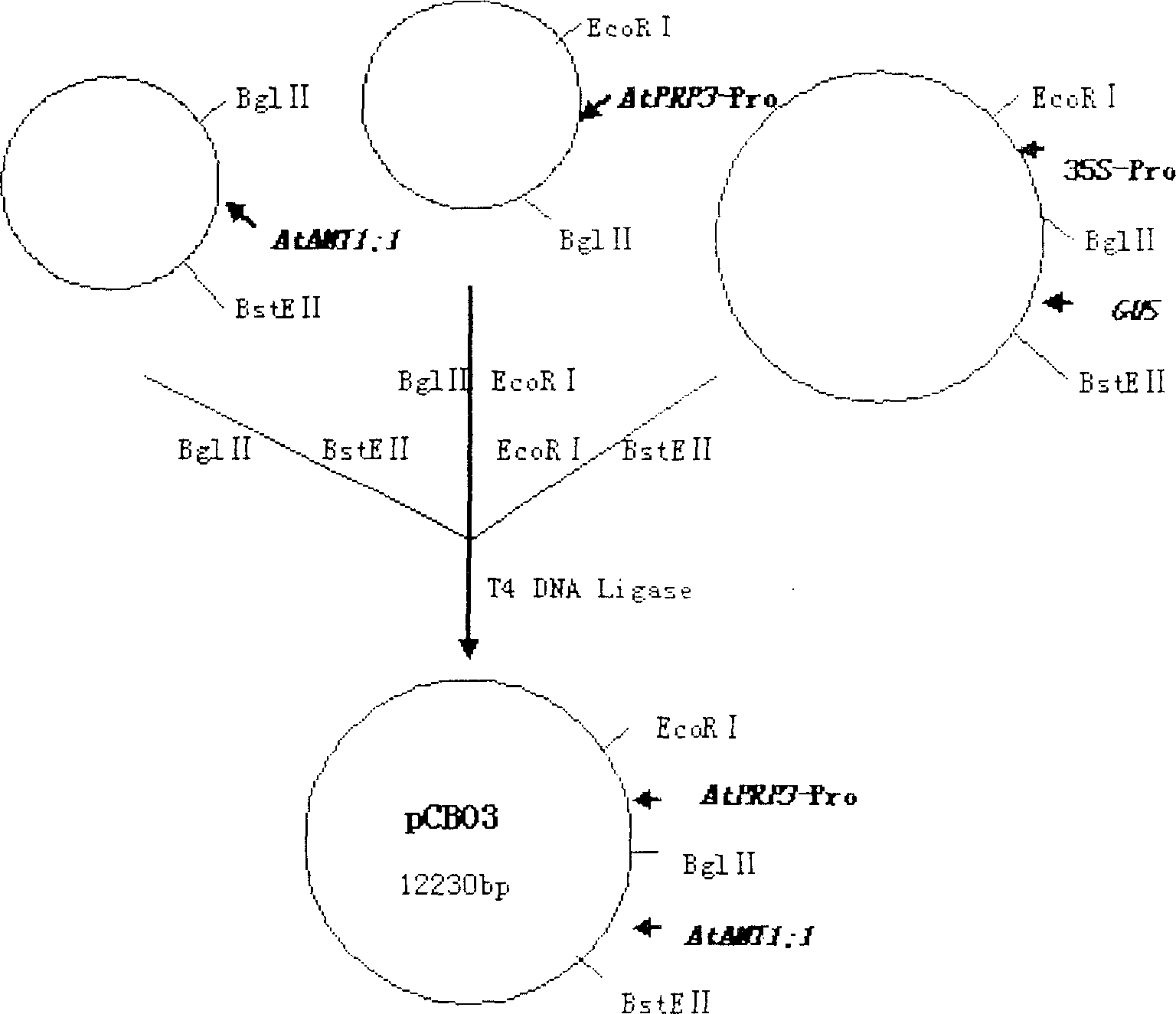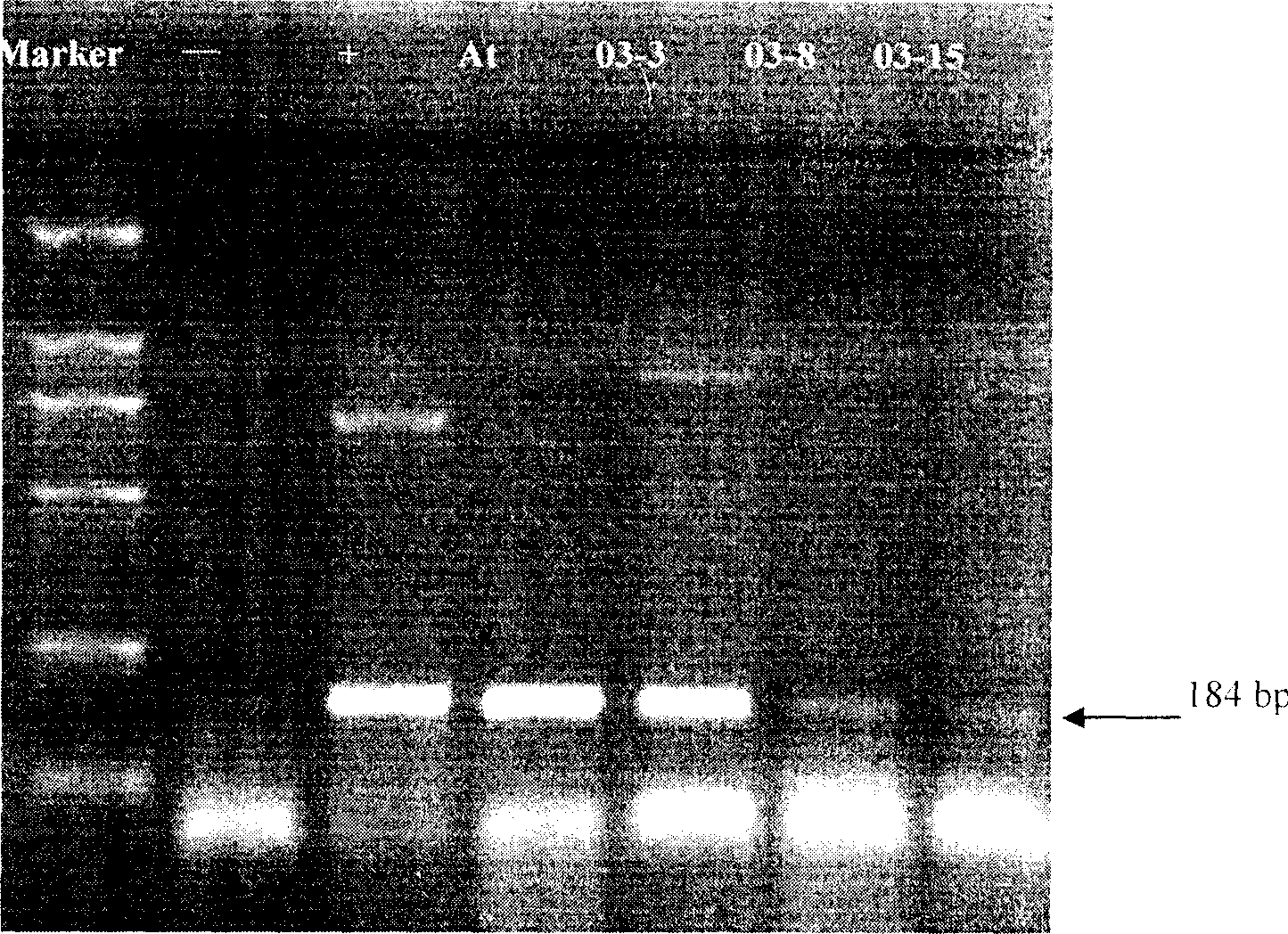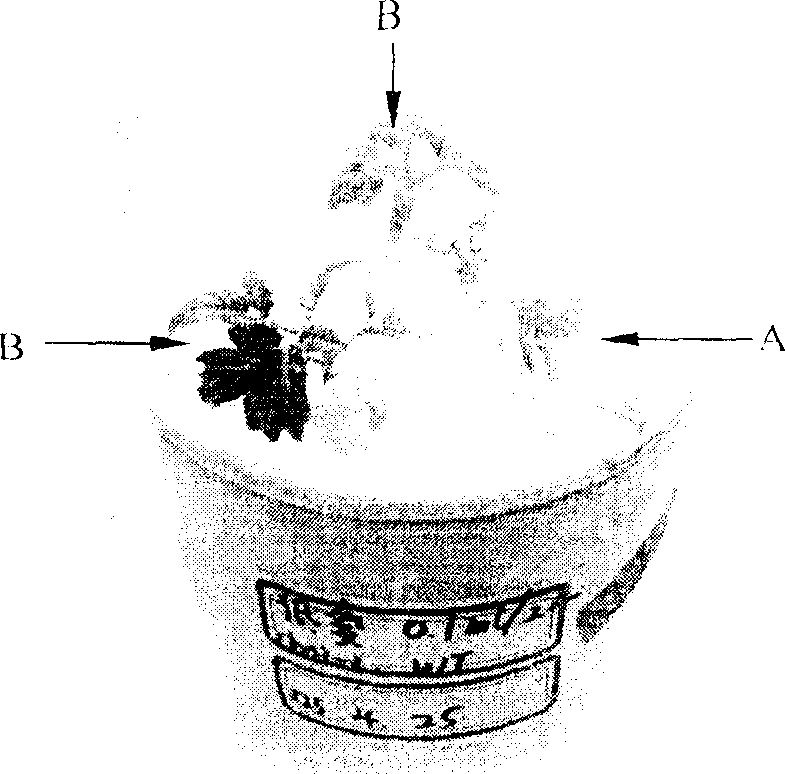High affinity ammonium transport factor fuse gene and its use in transgenic plant
A technology of fusion gene and high affinity, applied in application, genetic engineering, plant genetic improvement, etc., to achieve the effect of reducing production costs
- Summary
- Abstract
- Description
- Claims
- Application Information
AI Technical Summary
Problems solved by technology
Method used
Image
Examples
Embodiment 1
[0092] Example 1: Arabidopsis root-specific expression promoter AtPRP3 promoter clone
[0093] Using Arabidopsis thaliana genomic DNA as a template, the 1733bp AtPRP3 gene promoter was amplified by PCR method, and the amplified product was recovered and cloned by TA.
[0094] (1) PCR amplification of the target fragment
[0095] Specific primers were designed according to the sequence of the promoter region of the Arabidopsis thaliana root-specific expression AtPRP3 gene published in GenBank, and a BglII restriction site was introduced into the downstream primers.
[0096] Upstream primer: 5'-TAGAAGAGTTGTAACGCAAGCTGTG-3'
[0097] Downstream primer: 5'- AGATCT ACCATTGCTGAGCGCTTGGC-3' (BglII cut point introduced)
[0098] Genomic DNA of Arabidopsis thaliana was extracted according to a conventional method, and the genomic DNA was used as a template to carry out PCR amplification using the above primers to prepare AtPRP3 gene promoter fragments.
[0099] Reagent
...
Embodiment 2
[0118] Example 2: Arabidopsis high-affinity ammonium transport factor AtAMT1; 1 gene cloning
[0119] Specific primers were designed according to the sequence information of Arabidopsis thaliana AtAMT1; 1 gene cDNA (GenBank accession number X75879) published by GenBank, and BglII and BstEII restriction sites were introduced at the 5' end, respectively. The size of the PCR product should be 1526bp.
[0120] Upstream primer: 5'- AGATCT CAACATGTCTTGCTCGGCCA-3' (BglII cut point introduced)
[0121] Downstream primer: 5'- GGTCACC AAATCAAACCGGAGTAGGT-3' (BstEII cut point introduced)
[0122] Genomic DNA of Arabidopsis thaliana was extracted according to conventional methods, and AtAMT1; 1 gene was amplified by PCR using genomic DNA as a template, and then TA cloned with pUCm-T vector. The PCR reaction system, reaction conditions, recovery, cloning and sequencing of target fragments are the same as in Example 1.
Embodiment 3
[0123] Example 3: Construction of AtPRP3-AtAMT1 using pCAMBIA1301 vector; 1 fusion gene
[0124] (1) Extract vector plasmid pCAMBIA1301 from Escherichia coli (this strain can be obtained from other laboratories or purchased from reagent companies), and use EcoRI / BstEII double enzyme digestion to recover a large vector fragment.
[0125] (2) The plasmid was extracted from the TA clone prepared in Example 1, digested with BglII / EcoRI, and the AtPRP3 promoter fragment was recovered by agarose gel electrophoresis (trap method, same as in Example 1).
[0126] (3) The plasmid was extracted from the TA clone prepared in Example 2, digested with BglII / BstEII, and the AtAMT1;1 gene fragment was recovered by agarose gel electrophoresis.
[0127] (4) The above three fragments were ligated overnight at 16°C under the catalysis of ligase to complete the construction of AtPRP3-AtAMT1 on the pCAMBIA1301 vector; 1 fusion gene construction (see figure 1 ).
[0128] Reagent
Amou...
PUM
 Login to View More
Login to View More Abstract
Description
Claims
Application Information
 Login to View More
Login to View More - R&D
- Intellectual Property
- Life Sciences
- Materials
- Tech Scout
- Unparalleled Data Quality
- Higher Quality Content
- 60% Fewer Hallucinations
Browse by: Latest US Patents, China's latest patents, Technical Efficacy Thesaurus, Application Domain, Technology Topic, Popular Technical Reports.
© 2025 PatSnap. All rights reserved.Legal|Privacy policy|Modern Slavery Act Transparency Statement|Sitemap|About US| Contact US: help@patsnap.com



